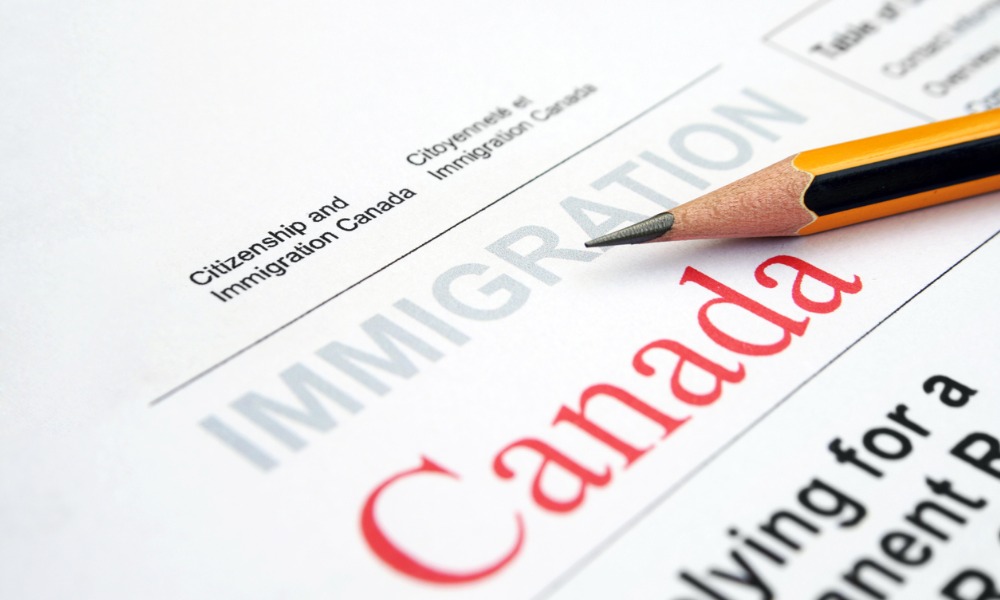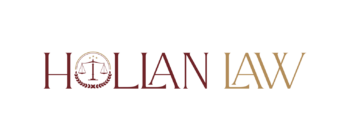
Definition and Prevalence
Erb’s Palsy, also known as brachial plexus birth palsy, is a condition that primarily affects newborns, resulting from nerve damage around the shoulder. It is characterized by weakness or paralysis of the arm, with the severity varying from mild to complete paralysis.
The prevalence of Erb’s Palsy is relatively low, with estimates suggesting it occurs in 1 to 2 per 1,000 live births. The condition is more common in cases of difficult labor or delivery, particularly those involving larger infants or breech presentations.
- Incidence: While not as common as some other birth injuries, Erb’s Palsy remains a concern due to its potential long-term effects on arm function.
- Demographics: The condition does not have a predilection for any specific demographic group and can affect infants of any ethnicity or socioeconomic status.
- Geographical Variation: The rates of Erb’s Palsy may vary by region and are influenced by the quality of prenatal and delivery care available.
Causes and Risk Factors
Erb’s Palsy, a form of brachial plexus injury, is often associated with complications that arise during childbirth. The condition is typically caused by an excessive pulling or stretching of the infant’s neck and shoulder during delivery. This undue stress can lead to the tearing or rupturing of nerves, which control muscle movements and sensations in the arm.
The risk factors for Erb’s Palsy include:
- A larger-than-average newborn, which can complicate natural delivery
- Breech deliveries, where the baby is positioned feet-first
- Prolonged labor, increasing the likelihood of medical intervention
- Use of delivery instruments, such as forceps or vacuum extractors, which may exert additional pressure on the baby’s neck and shoulders
Birth injuries, including brachial plexus injuries, can result from various factors during labor and delivery. Treatment options range from splinting to surgical interventions for severe cases. Understanding these causes and risk factors is crucial for preventing Erb’s Palsy and ensuring the well-being of both mother and child during childbirth.
Differences Between Erb’s Palsy and Other Birth Injuries
Erb’s Palsy is a specific type of birth injury that primarily affects the brachial plexus, the network of nerves that sends signals from the spine to the shoulder, arm, and hand. This condition is distinct from other birth injuries in several ways:
- Nature of Damage: While Erb’s Palsy involves nerve damage, other birth injuries may affect bones, muscles, or the brain.
- Cause: Erb’s Palsy is often the result of shoulder dystocia during a difficult birth. In contrast, other injuries might be due to oxygen deprivation or trauma.
- Recovery and Prognosis: The recovery from Erb’s Palsy can be more predictable if intervention is timely, whereas other injuries, such as cerebral palsy, may have more variable outcomes.
It is important to recognize that birth injuries caused by medical negligence can have severe short- and long-term effects on both the baby and mother. In cases where preventable errors during delivery are identified, legal action may be pursued. Understanding these differences is crucial for parents and healthcare providers to ensure appropriate care and support for affected infants.
Recognizing the Symptoms
Arm Weakness and Immobility
One of the most immediate signs of Erb’s Palsy in newborns is a noticeable weakness or complete immobility in one arm. This condition typically affects the upper arm and shoulder, but can also extend to the forearm and hand.
- The affected arm may appear limp and unresponsive immediately after birth.
- Parents might observe that their child does not move the limb when stimulated or in response to touch.
- The baby may keep the arm flexed against the body or held in an unusual position due to the lack of muscle control.
It is crucial for parents to monitor their child’s arm movements and responsiveness during the early weeks. Any asymmetry in movement between the two arms should be reported to a healthcare professional as it may indicate the presence of Erb’s Palsy.
Loss of Sensation in the Affected Limb
One of the early signs that may indicate Erb’s Palsy is a noticeable loss of sensation in the child’s affected limb. This numbness can range from a mild tingling to a complete lack of feeling, making it difficult for the infant to respond to tactile stimuli.
Parents might observe that their child does not move the affected arm when touched or does not seem to notice when the limb is in an uncomfortable position. This lack of sensation is often accompanied by other symptoms, such as a decrease in spontaneous movements or a difference in grip strength between the two hands.
It is crucial for parents to monitor their child for these signs:
- Unresponsiveness to touch in one arm
- Absence of reflexes in the affected limb
- A disparity in the infant’s ability to grasp with both hands
Early detection of these symptoms can lead to prompt medical evaluation and intervention, which are vital for improving the child’s long-term outcomes.
Physical Deformities and Posture
Physical deformities in infants with Erb’s Palsy can range from mild to severe, depending on the extent of nerve damage. One of the most common signs is an arm that is bent at the elbow and held against the body, a condition known as ‘waiter’s tip’ posture due to its distinctive appearance. This posture results from the loss of muscle control and can lead to further complications if not addressed promptly.
In addition to the characteristic arm position, affected infants may exhibit a range of physical deformities. These can include a lack of muscle development in the shoulder or arm, partial or full paralysis of the limb, and differences in limb length. It is crucial for parents to monitor their child’s physical development and seek medical advice if they notice any abnormalities.
Early intervention is key to managing and potentially improving physical deformities associated with Erb’s Palsy. Treatment options may include physical therapy, splinting, or in some cases, surgery. By recognizing these signs early, parents can take proactive steps to ensure their child receives the appropriate care and support.
Diagnosis and Early Intervention
Medical Assessment and Diagnosis
The journey to diagnosing Erb’s Palsy typically begins with a thorough medical assessment. This process involves a series of evaluations by healthcare professionals to confirm the presence and extent of the condition. Initially, a pediatrician will perform a physical examination, focusing on the infant’s arm strength, reflexes, and range of motion.
Following the physical exam, diagnostic tests may be recommended to gain further insight into the nerve damage. These tests often include:
- An electromyogram (EMG) to assess the electrical activity of the muscles.
- Nerve conduction studies (NCS) to evaluate the speed and strength of signals traveling through the nerves.
- Imaging tests such as ultrasound or MRI to visualize the affected nerves and surrounding tissues.
The results from these assessments are crucial for developing an effective treatment plan. Early and accurate diagnosis allows for timely interventions, which can significantly improve the prognosis for infants with Erb’s Palsy.
Importance of Early Detection
The early detection of Erb’s Palsy is crucial for the optimal development and recovery of the affected child. Identifying the condition promptly allows for the initiation of treatment strategies that can significantly improve outcomes. Early intervention can reduce the risk of permanent damage and increase the likelihood of a full or partial recovery.
Key reasons for the importance of early detection include:
- Minimizing long-term complications: The sooner Erb’s Palsy is diagnosed, the quicker therapeutic measures can be implemented to prevent lasting physical limitations.
- Enhancing neuroplasticity: Young infants have a remarkable capacity for neural regeneration. Early treatment can harness this potential for better recovery of nerve function.
- Facilitating normal growth and development: Addressing the condition early helps ensure that the child’s growth and developmental milestones are as unaffected as possible.
Parents and healthcare providers should be vigilant for signs of Erb’s Palsy and seek medical advice if concerns arise. Timely medical assessment can lead to early diagnosis, which is a pivotal step towards a successful treatment plan.
Treatment Options in the Early Stages
In the early stages following a diagnosis of Erb’s Palsy, treatment options are primarily focused on physical therapy and, in some cases, surgical intervention. Physical therapy plays a crucial role in maintaining joint flexibility and improving muscle strength. It typically includes gentle stretching exercises to prevent joint stiffness and muscle atrophy.
When physical therapy alone is not sufficient, surgical options may be considered. These can range from nerve grafts to muscle transfers, depending on the severity of the nerve injury. It’s important for parents to understand that early surgical intervention, ideally within the first year of life, can significantly improve outcomes.
In addition to these treatments, occupational therapy may be recommended to assist with daily activities and promote independence. The use of splints or casts might also be necessary to support the affected limb and encourage proper positioning. Parents should seek a multidisciplinary approach to care, involving pediatric neurologists, orthopedic surgeons, and physical therapists, to ensure a comprehensive treatment plan.
Caring for a Child with Erb’s Palsy
Daily Care and Handling
Caring for a child with Erb’s Palsy requires a gentle and attentive approach to daily activities. Parents and caregivers should be mindful of the child’s limited range of motion and provide support to the affected arm during routine care. This includes dressing, bathing, and feeding, where the child may need assistance to avoid strain on the injured nerves.
Proper positioning and handling are crucial to prevent further injury and to promote healing. The following points outline key considerations for daily care:
- Ensure the child’s affected arm is supported and not dangling or in a position that could cause discomfort.
- Use pillows or specially designed supports to maintain a comfortable position for the child, especially during sleep.
- Be vigilant about skin care, as reduced sensation in the limb can lead to unnoticed injuries or irritation.
- Engage in gentle range-of-motion exercises as recommended by a healthcare professional to maintain joint flexibility and muscle strength.
It is essential for caregivers to receive proper instruction on how to handle a child with Erb’s Palsy. This may involve working with a physical therapist or a pediatric specialist to learn techniques that aid in the child’s development and recovery.
Physical Therapy and Exercises
Physical therapy plays a crucial role in the recovery and development of children with Erb’s Palsy. Tailored exercises are designed to strengthen the affected arm and improve range of motion. These exercises often include:
- Gentle stretching to reduce stiffness
- Strengthening exercises to build muscle
- Activities to enhance fine motor skills
Parents and caregivers are usually instructed by physical therapists on how to properly perform these exercises at home. Consistency is key, as regular practice can significantly improve outcomes. It’s important to create a supportive environment that encourages the child to use the affected limb in daily activities, further promoting healing and development.
Moreover, physical therapy sessions provide an opportunity to monitor the child’s progress and adjust the exercise regimen as needed. As the child grows and develops, the complexity and intensity of the exercises can be increased to match their capabilities, ensuring continuous improvement.
Emotional Support and Coping Strategies
Caring for a child with Erb’s Palsy extends beyond physical therapies and medical treatments; it also involves addressing the emotional well-being of both the child and the family. Emotional support is a critical component of the healing process, as it helps in building resilience and coping with the challenges that come with the condition.
Parents and caregivers can employ various strategies to provide emotional support:
- Open Communication: Encourage open and honest discussions about feelings and frustrations. This can help the child express their emotions and not feel isolated with their condition.
- Positive Reinforcement: Celebrate small victories and progress, no matter how minor they may seem. This boosts the child’s self-esteem and motivation.
- Support Groups: Joining support groups can connect families with others facing similar challenges, providing a sense of community and shared understanding.
- Professional Counseling: Sometimes, seeking help from a psychologist or counselor can be beneficial for the child and family to navigate the emotional landscape of living with Erb’s Palsy.
It’s important for parents to also take care of their own emotional health, as their well-being directly impacts their ability to support their child. Taking time for self-care and seeking support when needed are essential steps in ensuring a nurturing environment for the child’s growth and development.
Prevention and Advocacy
Educating Expectant Parents
Education plays a pivotal role in preventing Erb’s Palsy by informing expectant parents about the condition and its risk factors. Prenatal classes and consultations with healthcare providers can offer valuable insights into the importance of proper birthing techniques and the identification of potential complications.
Key educational points include:
- The significance of monitoring fetal position and health during pregnancy.
- Understanding the impact of maternal health on delivery and potential birth injuries.
- Awareness of the options available for delivery, including the risks and benefits of different birthing methods.
By equipping parents-to-be with this knowledge, they can actively participate in the decision-making process during childbirth, advocating for the safest practices to minimize the risk of Erb’s Palsy and other birth-related injuries.
Advocating for Safer Delivery Practices
Advocacy for safer delivery practices is a crucial step in preventing conditions such as Erb’s Palsy. It involves a collective effort from healthcare professionals, expectant parents, and the community to ensure that the highest standards of care are upheld during childbirth.
Key areas of focus include:
- Training and Education: Ensuring that all medical staff involved in the delivery process are well-trained and aware of the best practices to minimize the risk of birth injuries.
- Policy Implementation: Working with healthcare institutions to develop and enforce policies that prioritize the safety of both mother and child during delivery.
- Awareness Campaigns: Raising awareness among expectant parents about the importance of choosing qualified healthcare providers and the options available for safe delivery.
By actively participating in advocacy efforts, individuals can contribute to a culture of safety that protects the most vulnerable from preventable injuries. This collective action not only promotes better outcomes for newborns but also supports the well-being of mothers during the critical process of childbirth.
Support Networks and Resources
Navigating the challenges of Erb’s Palsy can be overwhelming for parents, but they do not have to face it alone. Support networks provide a valuable space for sharing experiences, obtaining advice, and finding encouragement from others who understand the journey.
- Online Forums and Social Media Groups: These platforms allow parents to connect with others globally, offering 24/7 access to a community of support.
- Local Support Groups: Meeting with local families can provide a sense of community and opportunities for face-to-face interaction and mutual support.
- Nonprofit Organizations: Many organizations dedicated to Erb’s Palsy offer resources, educational materials, and advocacy opportunities.
Resources such as educational workshops, webinars, and informational pamphlets can empower parents with knowledge. Additionally, fundraising events and awareness campaigns can help families feel they are contributing to a greater cause, furthering research, and improving medical practices related to Erb’s Palsy.








